When you imagine a teeth-chattering winter, what are the states that come to mind? With its sweeping mountain ranges and vast plains, have you wondered “Is Montana the coldest state?” Let’s delve into the icy conditions and distinct mountain ranges of Big Sky Country to find out.
In this article, we’ll explore Montana’s average temperatures, the coldest recorded moments, and how its topography influences its climate. You’ll also discover other states that give Montana a run for its money in the winter chill.
- Related article: Montana During Winter
As someone who has experienced Montana’s snow-covered landscapes, I can assure you there’s more to this state than just frosty temperatures. So, is Montana the coldest state in the U.S., or does another contender claim that title? Let’s embark on this chilly journey and find out together.
7 Key Takeaways on Is Montana the Coldest State
- Montana’s bone-chilling temperatures make it the 6th coldest state in the U.S., with the coldest temperature ever recorded in the contiguous U.S.
- Montana’s weather patterns are heavily impacted by its geographical features.
- The mountainous regions in Montana experience the lowest temperatures on average.
- Other frigid states like Alaska, North Dakota, Minnesota, and Vermont offer winter wonderlands and cold features to rival Montana’s.
- Alaska takes the crown as the coldest state, with record lows and Arctic winds.
- North Dakota boasts a continental climate, with Fargo as the snowiest town.
- Vermont is not only cold but also the snowiest state in the U.S.
Montana: The 6th Coldest State in the U.S.
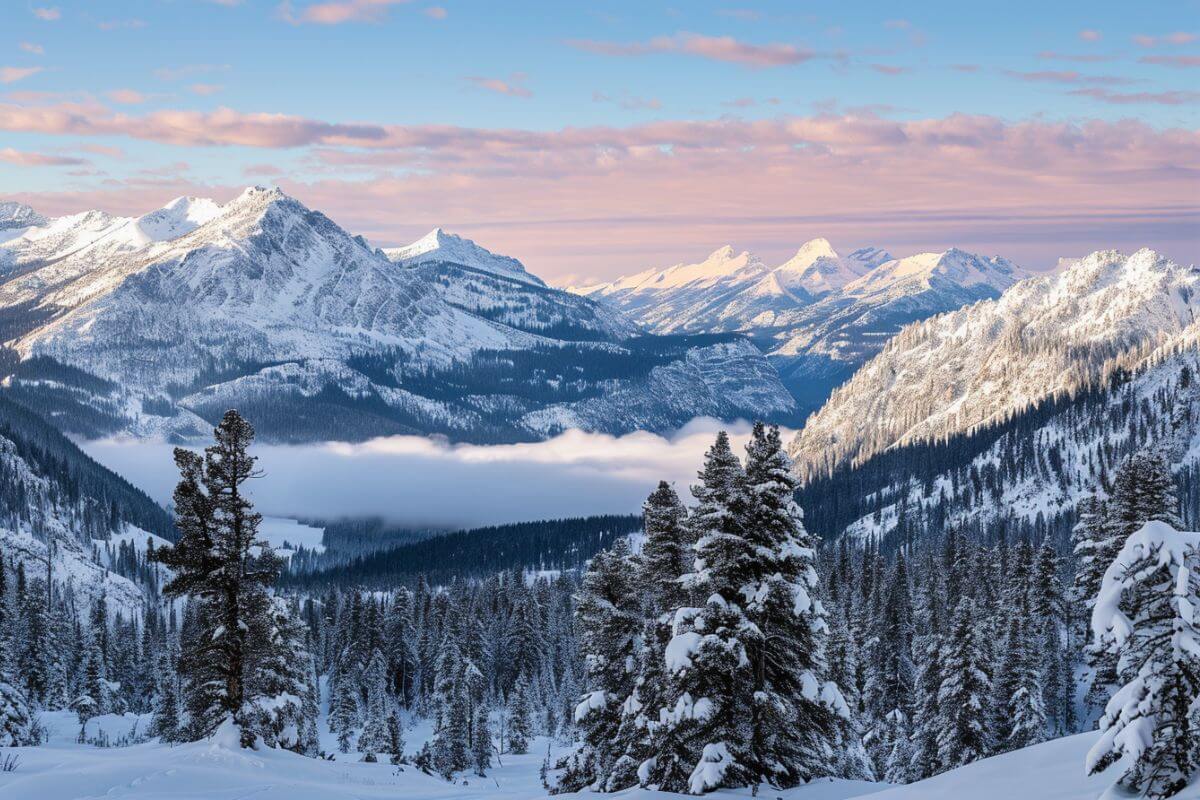
Montana, the Treasure State, isn’t just known for its stunning landscapes and wildlife; it’s also got a reputation for its bone-chilling temperatures.
On average, Montana ranks as the sixth coldest state in the U.S., with a yearly average temperature of 42.6°F (5.9°C). But let’s zoom in on the coldest month, January, where the mercury dips to around 0°F (-17°C). That’s chilly, indeed!
But here’s the kicker: Montana may not be the absolute coldest, but it holds the record for the coldest temperature ever recorded in the contiguous U.S. with -70°F (-57°C) on January 20, 1954, at Rogers Pass. That is is a true testament to the severe winter cold in Montana.
So, what makes Montana’s winters so frosty? Well, the answer lies in its topography. Montana is a land of contrasts, with the western portion enjoying a Pacific coastal climate, meaning milder winters and less icy conditions. On the flip side, the eastern part, with its plains, Badlands, and distinct mountain ranges, experiences a semi-arid continental climate, bringing the chill.
If you’re up for some fun winter activities, the coldest spots in Montana are often nestled in the mountains, particularly in the northwest and northern regions.
So, pack your thermals and get ready to hit the slopes, or try your hand at ice fishing. The cold may be intense, but the adventures are equally exhilarating!
Other Cold States in the U.S.
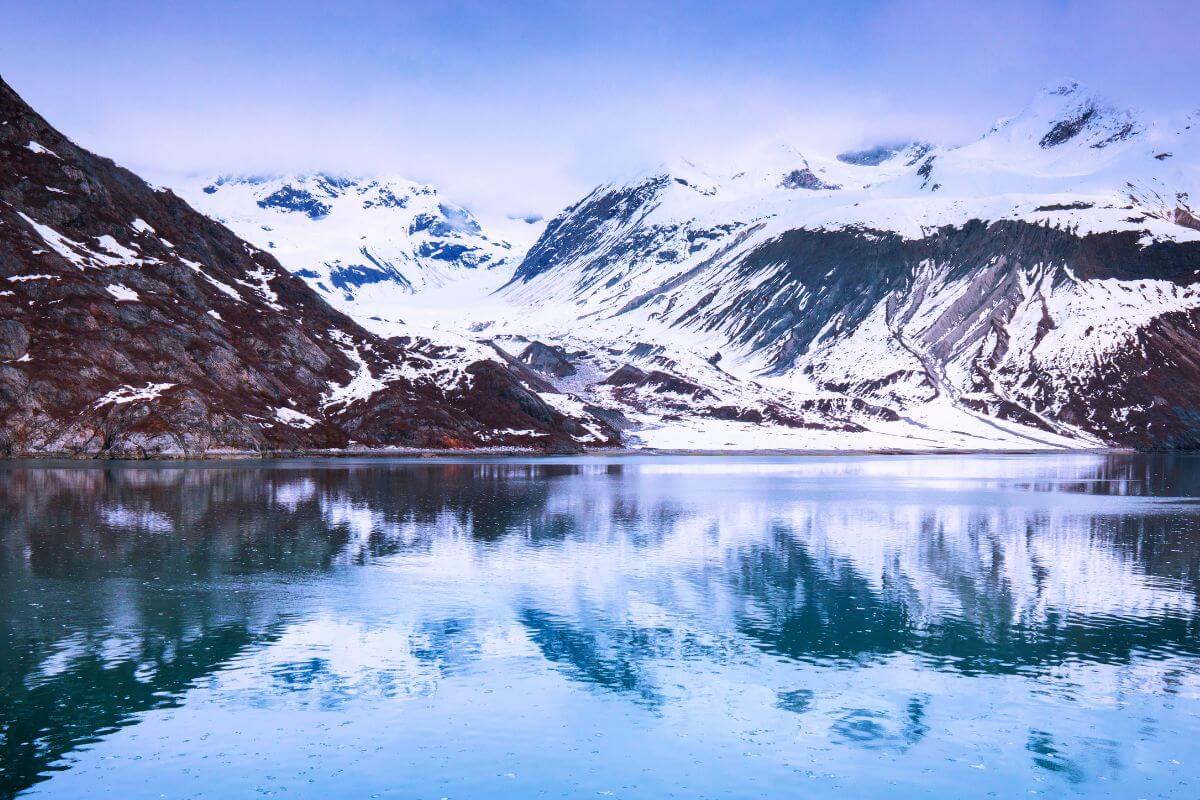
The United States, with a diverse climate spectrum ranging from the tropical climate of Florida to the subarctic climate of Alaska and the semi-arid desert of Arizona to the alpine region atop Colorado’s majestic mountains, attracts adventurers and dreamers from all over the world.
Now that we’ve established Montana’s chilly reputation, let’s take a quick look across the U.S. to see how it stacks up against other frigid states. In northern states such as Alaska, the farther from the equator, the colder the temperature.
1. Alaska
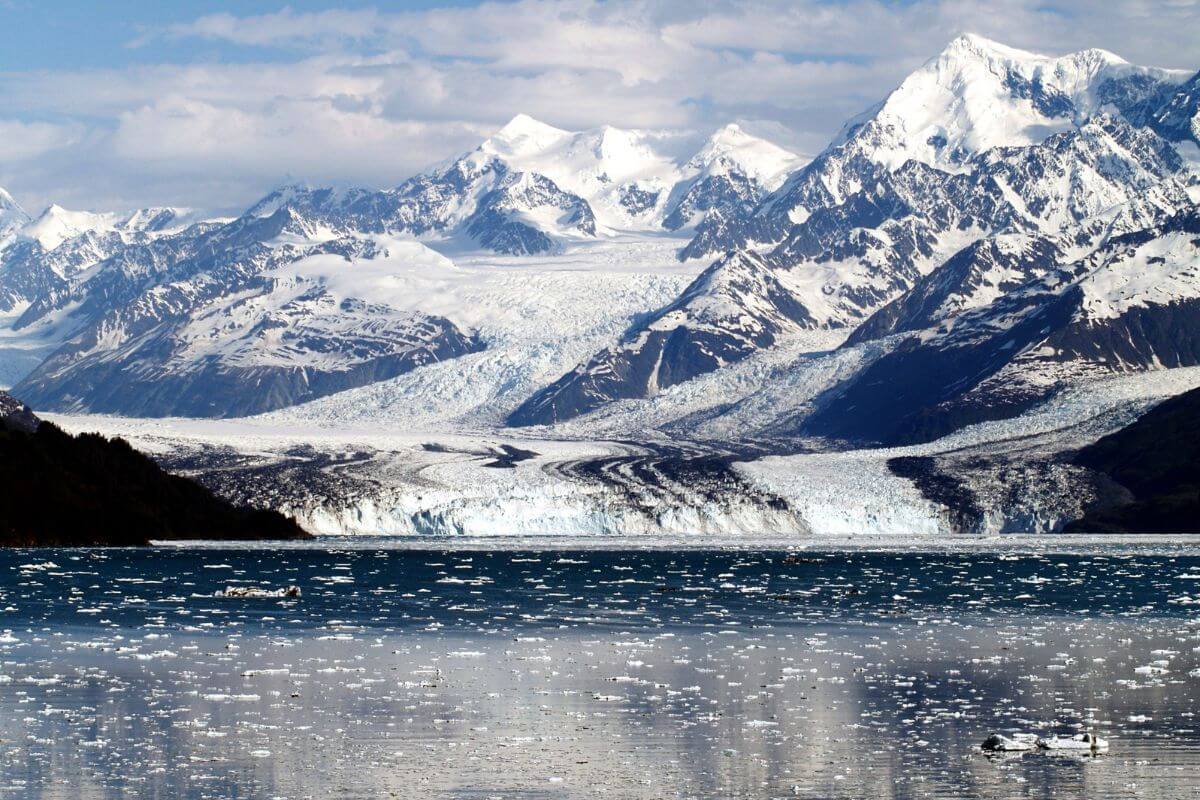
When it comes to the coldest states in the U.S., Alaska takes the icy crown. I’m not just talking about a light chill; we’re talking “freeze your breath” kind of cold.
With an average temperature of 28.1°F (-2.2°C), its winter lows can plunge to -30°F (-34°C).
Now, I know what you’re thinking: “That’s cold, but is it really the coldest?” Well, consider this: the lowest temperature ever recorded in the U.S. was a bone-chilling -80°F (-62.2°C). And guess where? Prospect Creek, Alaska, just north of Fairbanks, on January 23, 1971.
What makes Alaska so uniquely chilly? In its interior regions, you can blame those strong winds blowing down from northern Canada and even Siberia. It’s like getting hit with a double dose of Arctic air.
2. North Dakota
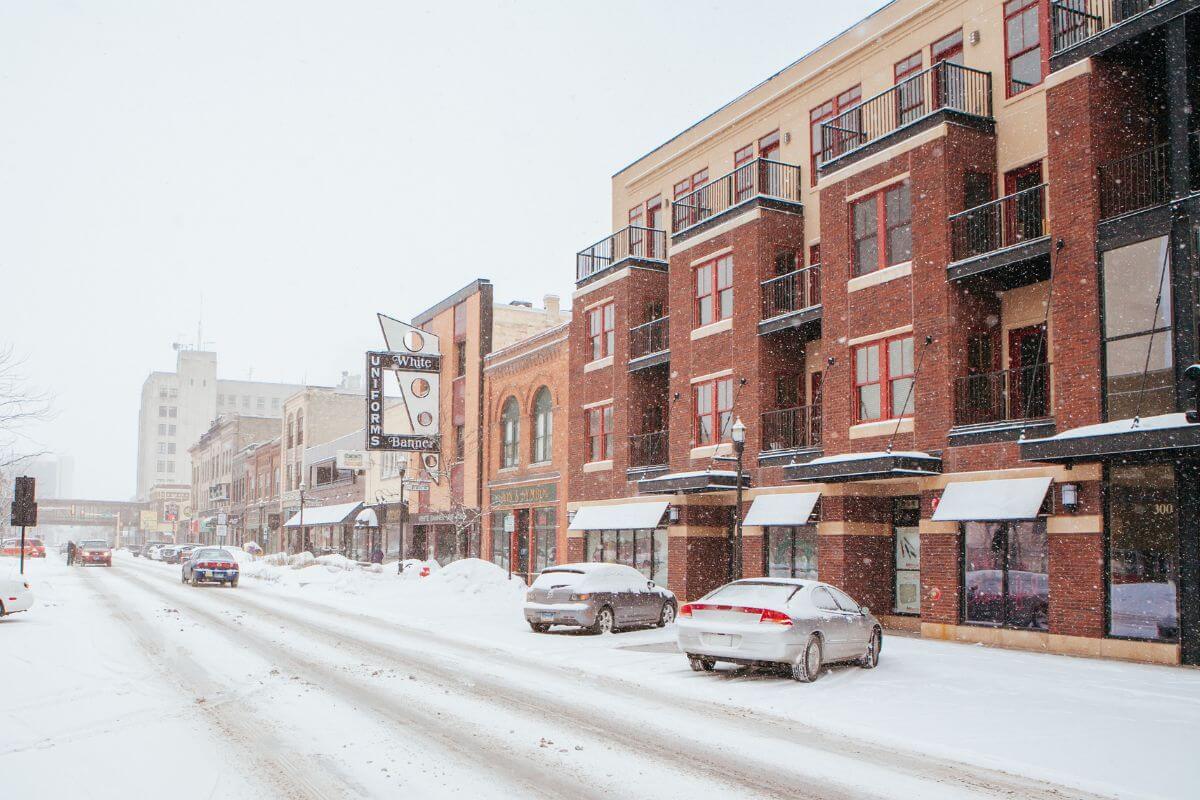
North Dakota, Montana’s second cousin in the “Who’s the Coldest?” competition. North Dakota is no stranger to icy temperatures, and it’s earned its spot as the second-coldest state in the U.S.
The state has an average annual temperature of 41.1°F (5.1°C), where the winter average is around 24°F (-4.4°C). With January as its coldest month, temperatures can range from 2°F (-16.7°C) in the north to 17°F (-8.3°C) in the south.
North Dakota’s climate is what you’d call “continental.” Summers can be scorching, but winters? Brrr, they’re no joke. And if you’re an ice skating enthusiast, you’ll find your frozen paradise in North Dakota.
With an average snowfall of 49.3 inches per year, Fargo takes the crown as the snowiest town in North Dakota. So, if you’re dreaming of the ice skating of your life, the state’s your best bet.
3. Minnesota

Now, let’s talk about the Land of 10,000 Lakes — Minnesota. While it’s no stranger to winter’s icy grip, it doesn’t quite reach the bone-chilling extremes of its northern neighbors.
Minnesota clocks in as the third-coldest state in the U.S., with an average annual temperature of 41.8°F (5.4°C). That’s right — while it’s no tropical paradise, it’s also not quite as frigid as you might imagine.
So, what gives Minnesota its somewhat milder climate compared to, say, North Dakota or Alaska? One word: geography.
Located in the Upper Midwest, Minnesota enjoys a more temperate climate thanks to its proximity to the Great Lakes. Lake Superior, in particular, has a moderating effect on the state’s northeastern side, keeping winters a bit more bearable.
Don’t get me wrong — Minnesota still gets its fair share of winter. The cold season lasts about 3.3 months, with average daily high temperatures dipping below 36°F (2.2°C).
4. Maine
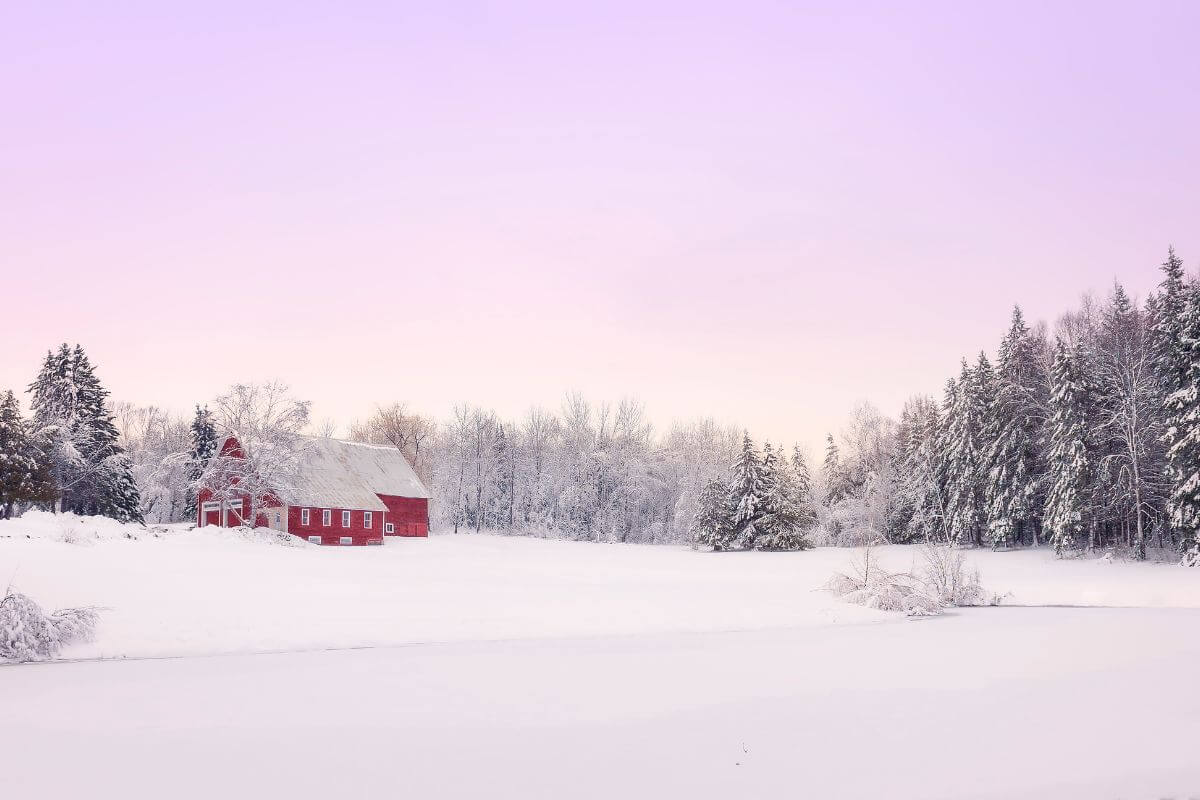
What do you think of when you picture Maine? Lobsters, lighthouses, and…snow? That’s right! As the fourth-coldest state in the U.S. with an average annual temperature of 41.9°F (5.5°C), Maine has more to offer than just picturesque seascapes.
So, what makes Maine’s winters special? Well, for one, they’re cold. Like, really cold. The average low in winter hovers around a bone-chilling 12°F (-11°C). And if you’re into abundant snowfall, you’re in for a treat.
It’s no wonder that winter sports like downhill skiing and snowboarding are popular pastimes here. The coast gets an average of 50 to 70 inches of snow each year, while inland areas can see a whopping 60 to 110 inches.
5. Wyoming
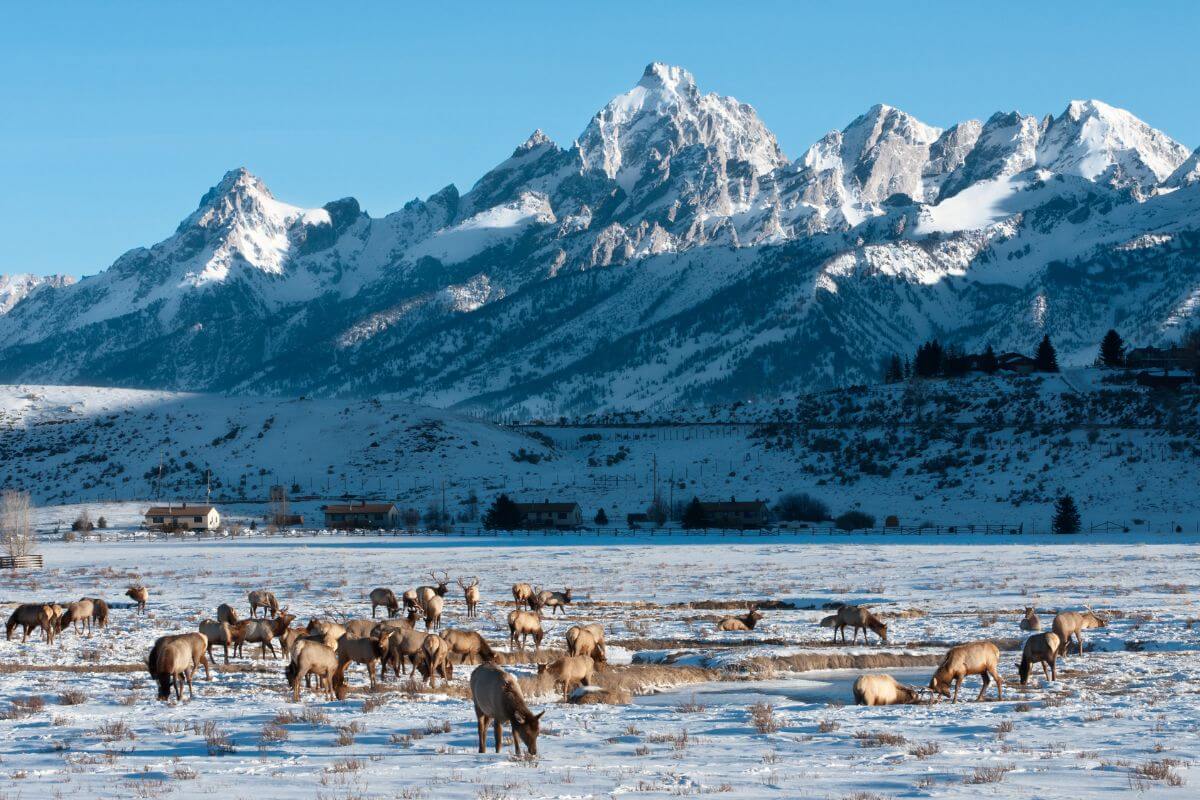
Wyoming, the fifth-coldest state in the U.S., is a place where you’ll want to bundle up tight. With an average temperature of 42.3°F (5.7°C), the state’s winter season can be downright chilly. Don’t be surprised if the mercury dips as low as 0°F to 15°F (-18°C to -9°C) during the coldest months.
What sets Wyoming apart from other cold spots in the country is its unique semi-arid and continental climate. Summers here are warm, but when winter rolls around, you’ll feel the bite of that dry, northern air. It’s the kind of cold that seeps into your bones, but with the right gear, you can still enjoy the great outdoors.
If you’re a fan of winter sports, Wyoming has a lot to offer. The highlands and mountaintops see an average snowfall of about 200 inches, making it a haven for backcountry skiing and snowboarding. Even in the lowlands, you can expect a respectable 50 inches of snow, perfect for building snowmen or going on a peaceful winter hike.
6. Vermont
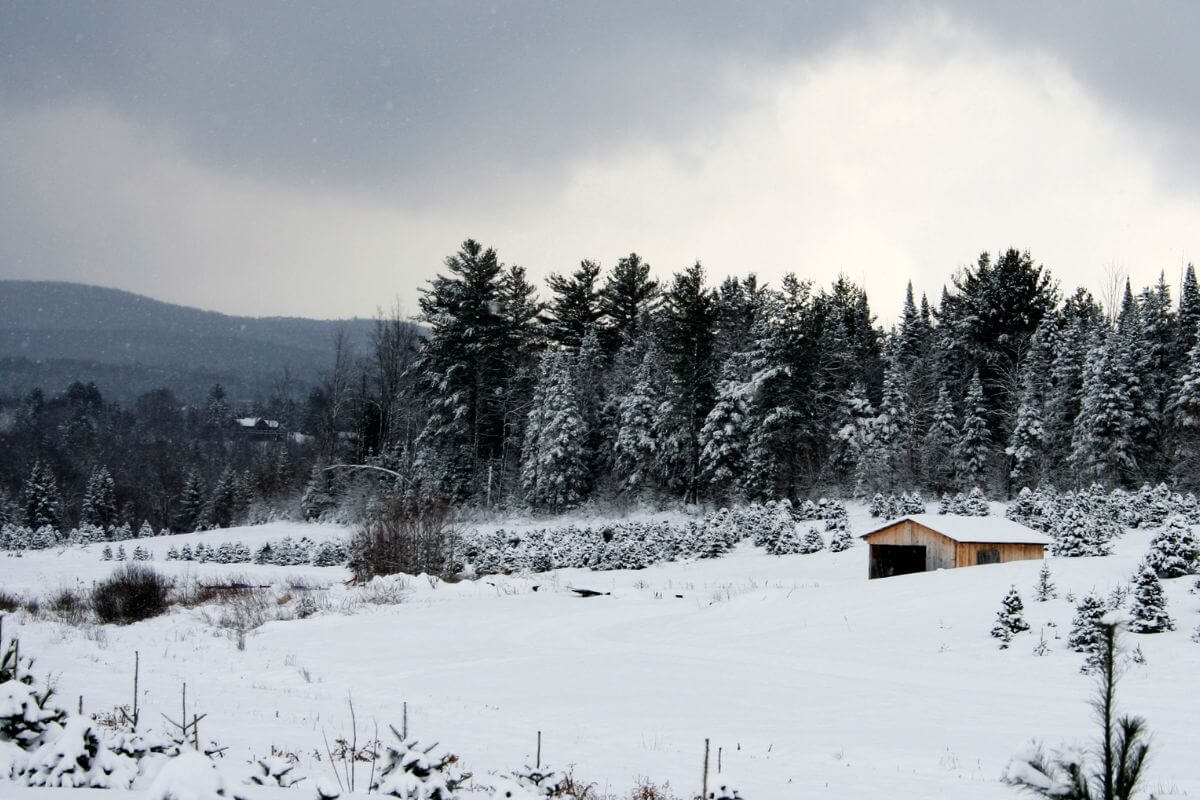
If you think Montana is cold, let me introduce you to Vermont, the winter wonderland that takes the seventh spot on the list of coldest U.S. states. With an average temperature of 43.2°F (6.2°C), it’s no surprise that Vermont is a hotspot for snow enthusiasts.
Vermont boasts an impressive annual snowfall of around 89.25 inches. That’s right, it’s not just cold; it’s also the snowiest state in the U.S. So if you’re into snow sports like cross-country skiing, Vermont is your dream destination.
What makes Vermont so frigid? Blame it on the Arctic winds that sweep down from the north, turning the state into a winter wonderland. These winds bring not just cold temperatures but also the fluffy white stuff that winter dreams are made of.
7. Wisconsin
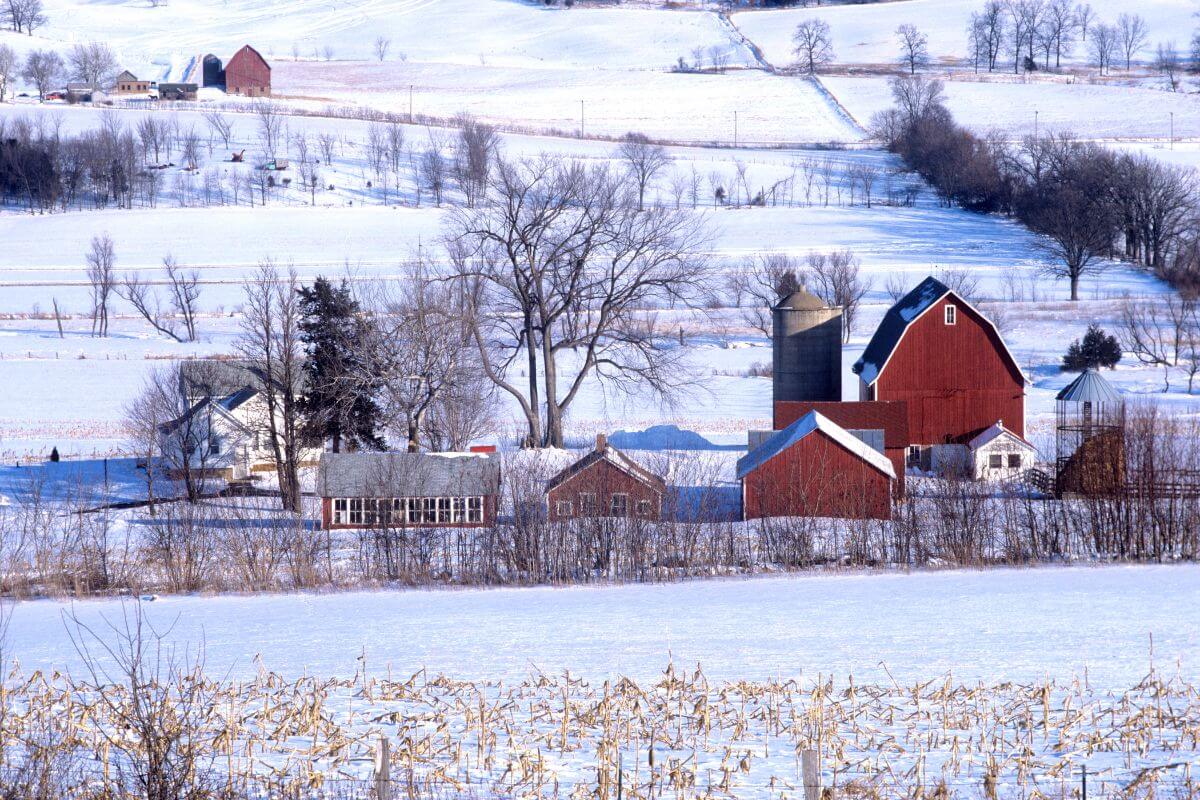
Wisconsin, with its Great Lakes neighbors, isn’t exactly serving up piña coladas on the beach either. In fact, Wisconsin shares the eighth spot for coldest states in the U.S. with Idaho, boasting an average temperature of 44°F (6.7°C).
Now, what’s the deal with the Badger State’s climate? Well, the answer lies in the influence of its aquatic neighbors. Lake Superior and Lake Michigan embrace Wisconsin on two sides, creating what I like to call a “lake effect.”
Here’s a fun fact: Wisconsin’s northern and western regions can get dumped on with up to 160 inches of snowfall in a year. On the other hand, the rest of the state usually clocks in at a more manageable 40 inches annually.
8. Idaho
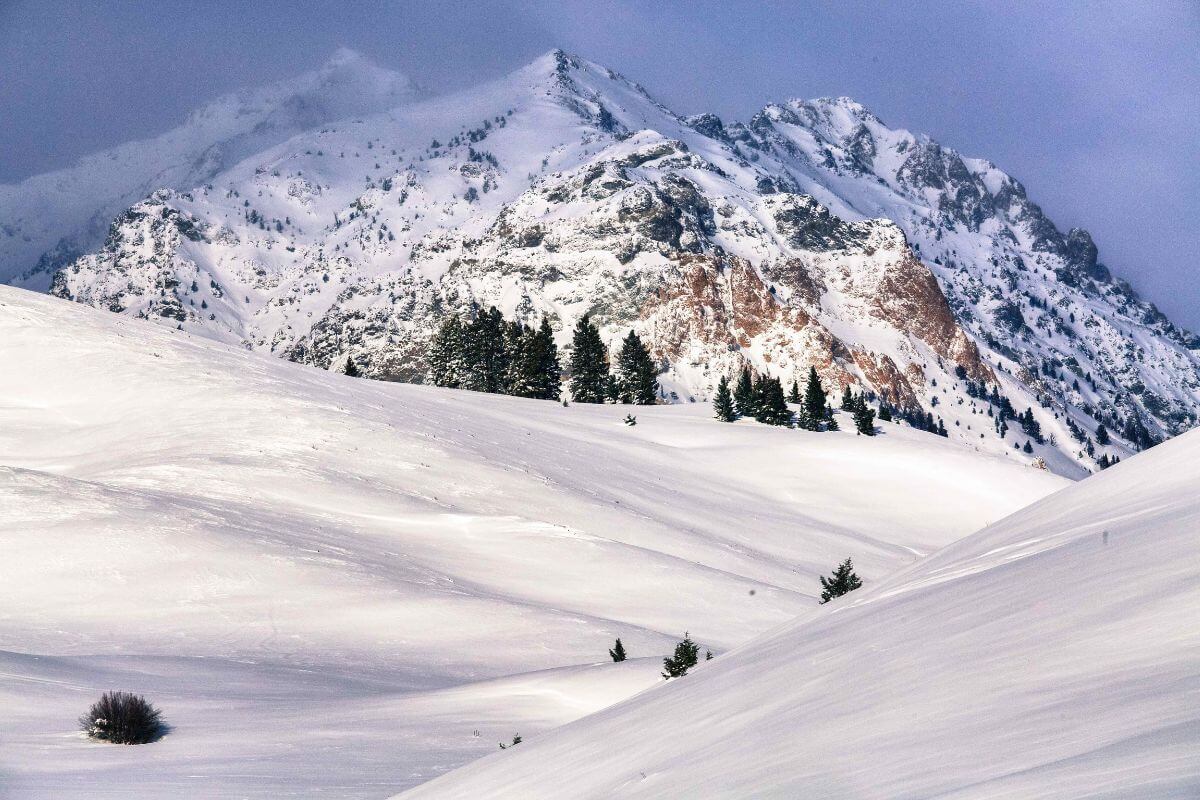
Idaho, my friend, is a fascinating state. On the temperature scale, it finds itself in a cozy tie with Wisconsin for the eighth-coldest state in the U.S., boasting an average temperature of 44°F (6.7°C).
The average winter lows in Idaho? Somewhere between a chilly -2°F (-18.9°C) and 22°F (-5.6°C). Brrr, indeed! If you thought that was cold, Idaho Falls takes it to another level, dipping to a bone-chilling 16°F (-8.9°C).
But here’s the twist: Idaho isn’t all about winter woes. Late June to early September is when the state really shines for warm-weather activities. So, if you’re the kind of person who experiences winter weather and loves it, Idaho might just be your cup of cocoa.
Now, here’s where it gets interesting. Idaho’s weather isn’t a monolith; it’s more like a patchwork quilt of climatic diversity including:
- The northern, eastern, and central regions? Heavy snowfall is the name of the game.
- The southern regions, on the other hand, enjoy milder temperatures. So, if you’re not a fan of snow up to your knees, the south might be more your style.
9. New Hampshire
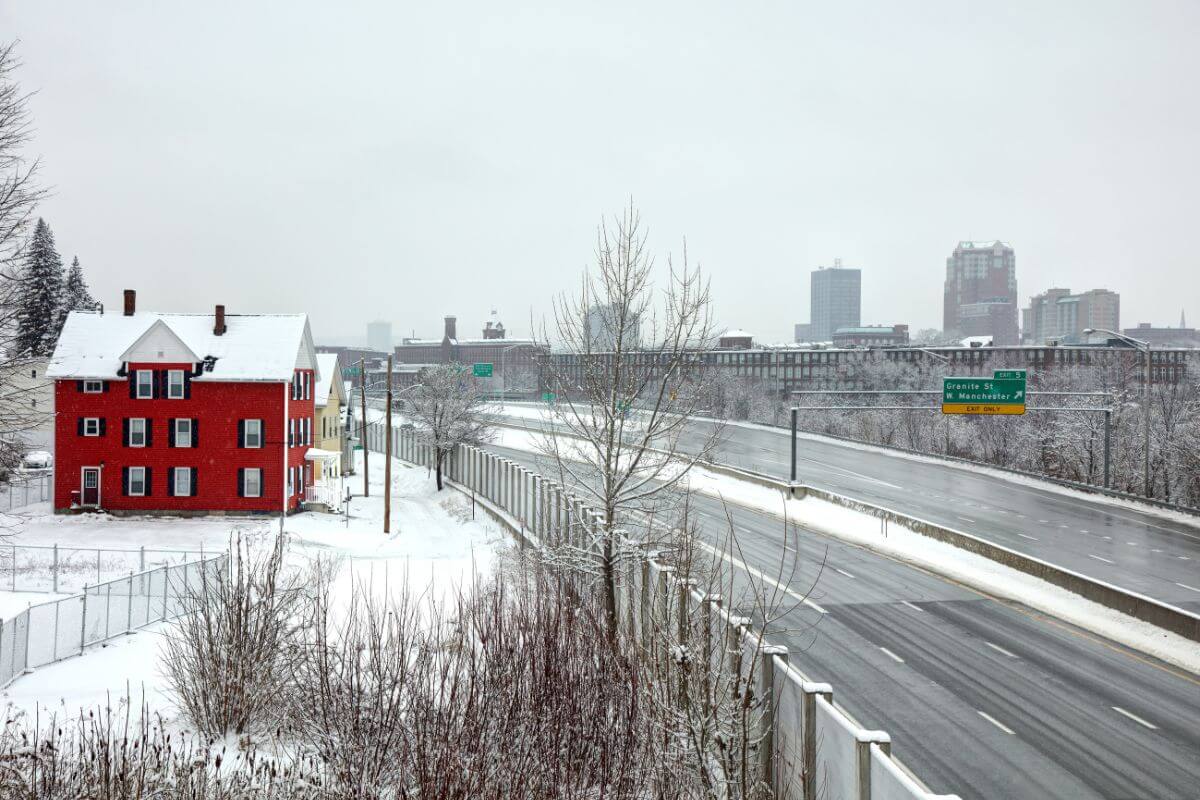
New Hampshire, the Granite State, holds its own in the chilly ranks of America. With an average yearly temperature of 44.2°F (6.8°C), it’s safe to say that a warm coat is a New Hampshirite’s best friend.
During the winter, the state’s coldest month is January, when temperatures can dip as low as -4°F (-20°C) in the north and hover around a relatively balmy 15°F (-9°C).
Here’s a closer look at how New Hampshire’s climate varies across its topography:
- Northern New Hampshire – This region gets the brunt of the cold, thanks to those strong arctic winds that sweep down from Canada. If you’re planning a winter hike in the White Mountains, be prepared for some serious frostiness.
- Southeastern New Hampshire – This area, bordering the Atlantic Ocean, enjoys the mildest winters in the state. The ocean’s moderating effect helps keep temperatures a bit more comfortable, so you can still enjoy a seaside stroll without feeling like Jack Frost himself.
Although New Hampshire may not be considered the coldest state, it still experiences the cold and harsh grip of winter.
Is Montana the Coldest State Final Thoughts
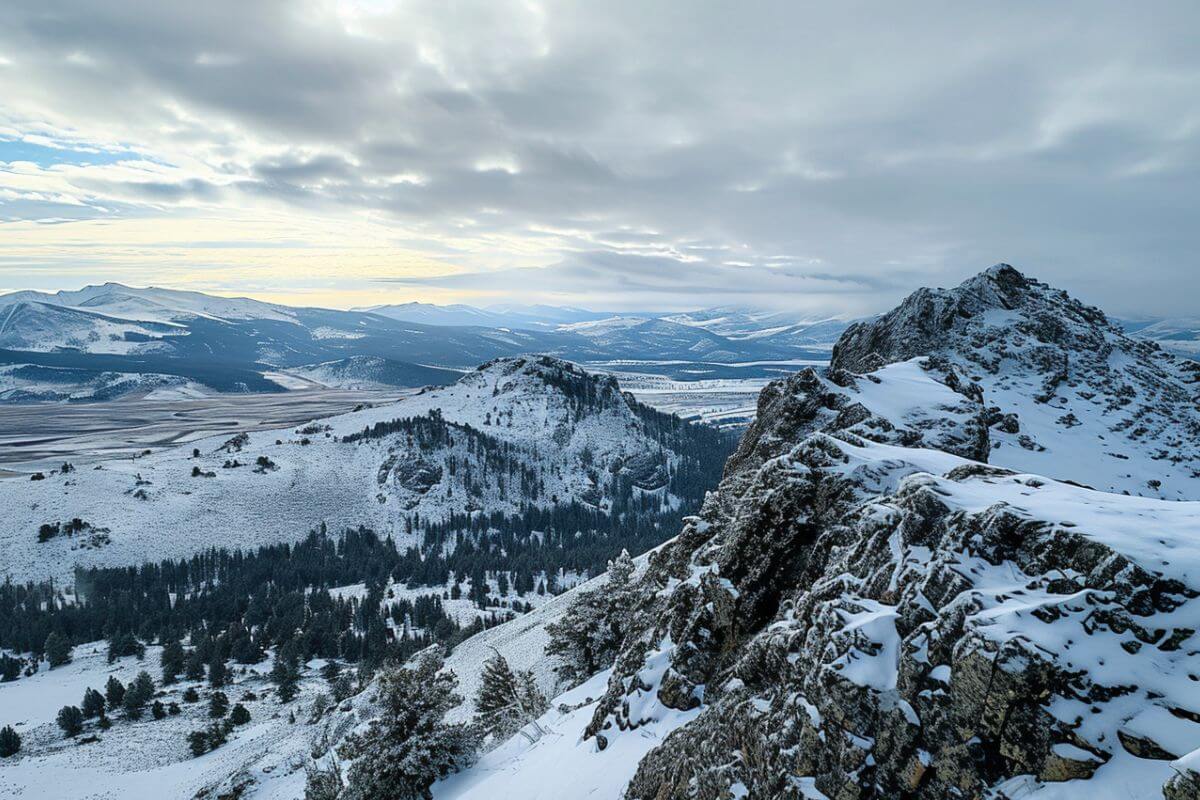
Montana is undeniably one of the coldest states in the U.S. With its harsh winters and consistently low temperatures, it is a destination for cold-weather enthusiasts.
Beyond the numbers, the Treasure State’s cold climate offers a unique and beautiful experience for residents and visitors alike. From winter sports and cozy mountain getaways, the state’s cold weather is an essential part of its identity.
However, it is not alone in its frigid climate. The other coldest states, such as Alaska, North Dakota, and Minnesota, also experience extreme cold and snowy conditions.
If you’re an avid winter enthusiast or just someone who wants to escape the cold, these states offer a mix of winter wonderland and chill that rivals Montana’s. Whether it’s dog sledding in Alaska or sipping hot cocoa in a cozy Vermont cabin, the U.S. has no shortage of winter adventures.
While Big Sky Country may be known for its cold climate, it is just one of many states in the U.S. that offer a true winter wonderland for those who are willing to brave the cold. But whether you’re a fan of the cold or not, there’s no denying that Montana’s wintry charm is something to be celebrated.
Is Montana the Coldest State FAQs
1. Why Does Montana Get So Cold?
Montana experiences cold temperatures mainly due to its northern geographical location and diverse topography, which includes mountainous terrain that contributes to harsh winter conditions.
2. What Is the Coldest It Gets in Montana?
In January, Montana witnesses its lowest temperatures. The winter month is marked by frigid weather conditions, with some high-altitude regions experiencing temperatures that drop significantly below the freezing point.
3. Does It Ever Get Hot in Montana?
While Montana endures bitterly cold winters, the state experiences warm summers, with temperatures soaring as high as 88°F (31°C) during the peak of the summer months.
4. Is Montana the Coldest State to Live In?
Montana is renowned for its extreme cold, making it one of the coldest states in the United States; however, Alaska is generally considered the coldest state overall.
5. What Are the 3 Coldest States in the United States?
States such as Alaska, North Dakota, and Minnesota are known for being extremely cold due to their location in the north and severe winter weather conditions, making them consistently rank among the top three coldest states in the U.S.
Check out these articles to discover more about Montana:

